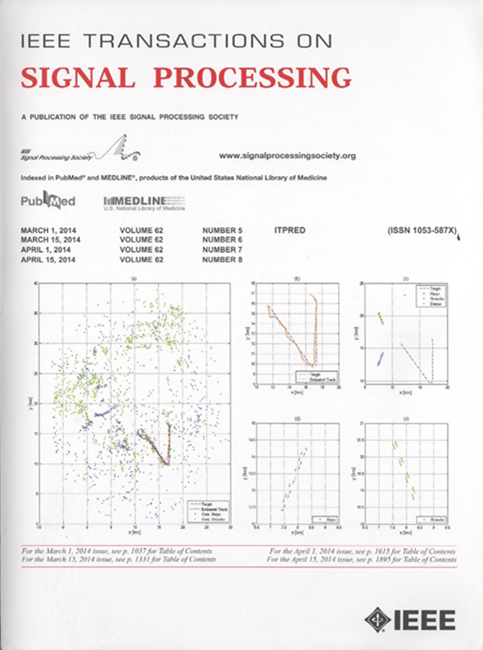异构传感器的贪婪选择
IF 4.6
2区 工程技术
Q1 ENGINEERING, ELECTRICAL & ELECTRONIC
引用次数: 0
摘要
在一个大规模的传感器网络中,所有传感器的同时运行是非常耗电和计算昂贵的。因此,选择较少的传感器是可取的。贪婪算法被广泛用于同质网络的传感器选择,其理论最坏情况性能为$\boldsymbol{(\mathbf{1-1}/\mathbf{e})\mathbf{\约63}}$%的优化子模指标的最优性能。对于包含多组传感器的异构传感器网络(HSNs),现有的大多数传感器选择方法都受所选传感器总价值预算的约束来优化性能。然而,在许多应用中,从每个集合中选择的传感器数量是已知的,并且解决方案没有得到很好的探索。针对这一问题,我们提出了一种联合贪婪异构传感器选择算法。从理论上讲,我们证明了所提出算法的最坏情况性能被限制在次模成本指标的最优值的50 %。在具有两个传感器网络的hsn的特殊情况下,当从一组中选择的传感器数量比另一组少得多时,性能保证可以提高到63 %。为了在实验上验证我们的结果,我们提出了一个基于帧电位测量的子模块度量,该度量考虑了传感器测量之间的相关性和它们的异质性。我们证明了在使用此性能度量时解的均方误差的理论界限。我们通过仿真实验验证了我们的结果,同时考虑了受加性噪声和量化误差破坏的线性和非线性测量模型。实验表明,该算法的误差比现有方法降低$4 {\boldsymbol{\mathbf{-}}} 10$ dB。本文章由计算机程序翻译,如有差异,请以英文原文为准。
Greedy Selection for Heterogeneous Sensors
Simultaneous operation of all sensors in a large-scale sensor network is power-consuming and computationally expensive. Hence, it is desirable to select fewer sensors. A greedy algorithm is widely used for sensor selection in homogeneous networks with a theoretical worst-case performance of $\boldsymbol{(\mathbf{1-1}/\mathbf{e})\mathbf{\approx 63}}$ $50$ $63$ $4 {\boldsymbol{\mathbf{-}}} 10$
求助全文
通过发布文献求助,成功后即可免费获取论文全文。
去求助
来源期刊

IEEE Transactions on Signal Processing
工程技术-工程:电子与电气
CiteScore
11.20
自引率
9.30%
发文量
310
审稿时长
3.0 months
期刊介绍:
The IEEE Transactions on Signal Processing covers novel theory, algorithms, performance analyses and applications of techniques for the processing, understanding, learning, retrieval, mining, and extraction of information from signals. The term “signal” includes, among others, audio, video, speech, image, communication, geophysical, sonar, radar, medical and musical signals. Examples of topics of interest include, but are not limited to, information processing and the theory and application of filtering, coding, transmitting, estimating, detecting, analyzing, recognizing, synthesizing, recording, and reproducing signals.
 求助内容:
求助内容: 应助结果提醒方式:
应助结果提醒方式:


